수동 및 능동 셀 밸런싱을 사용해서 배터리 스택의 각 셀을 모니터링 함으로써 건전한 배터리 충전 상태(SoC)를 유지할 수 있다. 그럼으로써 배터리 사이클 수명을 연장할 뿐만 아니라, 과방전으로 인한 배터리 셀 손상을 방지해 추가적인 차원의 보호를 할 수 있다. 특히 능동 배터리 셀 밸런싱은 수동 배터리 셀 밸런싱보다 복잡한 밸런싱 기법이다. 충전 사이클과 방전 사이클 시에 배터리 셀들 간에 전하를 재분배함으로써 배터리 스택에서 활용되는 총 전하를 늘려서 시스템 사용시간을 늘린다. 수동 밸런싱을 사용할 때와 비교해서 충전 시간을 단축하고, 밸런싱을 하는 동안 발생하는 열을 줄인다.
| 배터리 불일치 문제, 대용량 배터리일 경우 치명적
| 불일치로 인한 잦은 배터리 충전·방전, 수명 줄여
| 능동 밸런싱, 수동보다 충전 시간, 열 발생 적어
배터리를 사용하는 애플리케이션이 늘어나고 있다. 스마트폰부터 전기자동차까지 그 크기도 다양하다. 엔지니어들은 이제 어떻게 하면 배터리를 효율적으로 사용하고 교체 비용을 줄일 수 있을지 고민하기 시작했다.
수동 및 능동 셀 밸런싱을 사용해 배터리 스택의 각 셀을 모니터링 하면 건전한 배터리 충전 상태(State of Charge; SoC)를 유지할 수 있다. 그럼으로써 배터리 사이클 수명을 연장할 뿐만 아니라, 과방전으로 인한 배터리 셀 손상을 방지해 추가적인 차원의 보호를 할 수 있다.
수동 밸런싱(passive balancing)은 외부의 저항을 통해 여분의 전하를 소산시켜 모든 배터리 셀들이 비슷한 SoC가 되도록 한다. 따라서 시스템 사용시간을 늘리지는 못한다.
능동 밸런싱(active balancing)은 좀 더 복잡한 밸런싱 기법이다. 충전 사이클과 방전 사이클 시에 배터리 셀들 간에 전하를 재분배함으로써 배터리 스택에서 활용되는 총 전하를 늘려서 시스템 가시간을 늘린다. 수동 밸런싱을 사용할 때와 비교해서 충전 시간을 단축하고, 밸런싱을 하는 동안 발생되는 열을 줄인다.
방전 시 능동 셀 밸런싱
그림 1의 다이어그램은 통상적인 배터리 스택에서 모든 셀들이 최대 용량에서부터 시작하는 것을 보여준다. 이 그림에서 최대 용량은 90% 충전으로 표시되어 있다. 배터리를 장기간 거의 100%에 가까운 용량으로 유지하면 수명이 빠르게 줄어들기 때문이다. 최대로 방전했을 때는 30%로서, 이것은 과방전을 방지하기 위해서다.
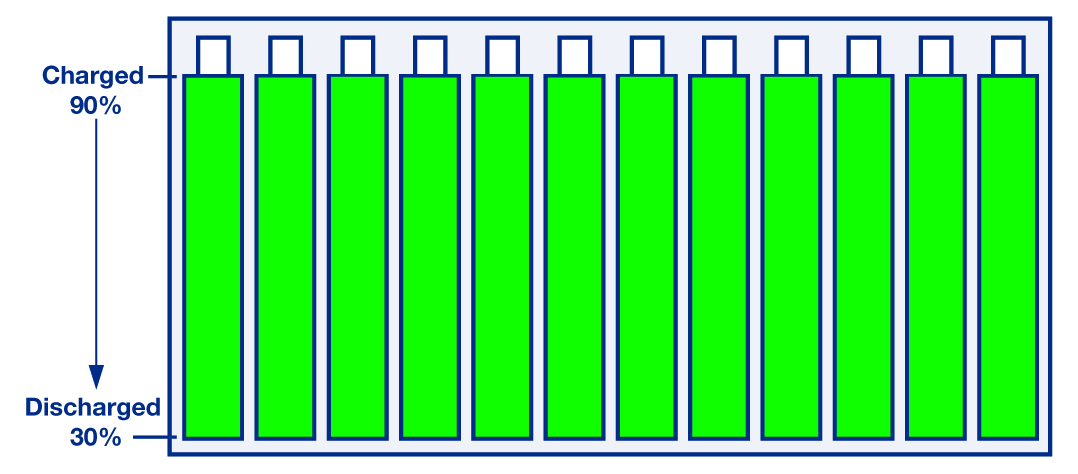
그림 1: 최대 용량일 때
시간이 지나면서 어떤 셀들이 다른 셀들보다 약해짐으로써 방전 프로파일이 그림 2와 같아진다.
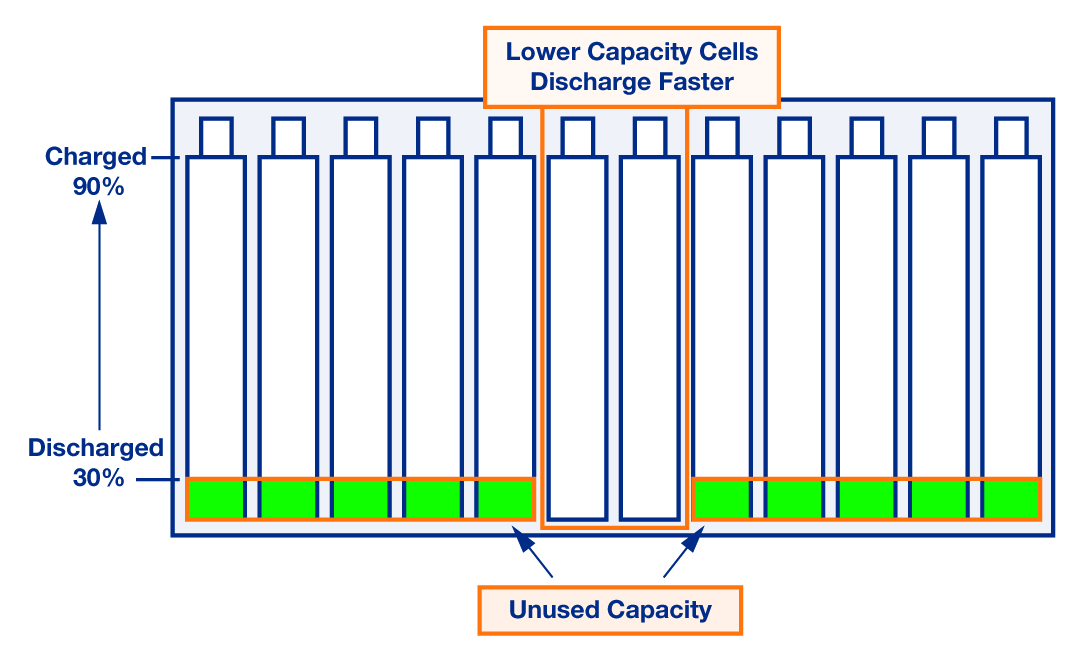
그림 2: 방전 불일치
그림에서 보듯이 다수의 셀들에서 상당히 용량이 남아 있는데, 약한 셀들이 제한 요인이 되어서 시스템 사용시간이 제한된다.
5%의 배터리 불일치이면 5%의 용량이 사용되지 못하는 것이다. 그러므로 대용량 배터리의 경우 사용되지 못하는 에너지양이 상당할 수 있다.
사용되지 못하는 에너지가 발생하면 배터리를 충전하고 방전하는 횟수가 많아지게 된다. 이것은 다시 배터리 수명을 단축하는 것으로 이어지고 배터리를 더 빈번하게 교체해야 함으로써 비용이 증가한다.
능동 밸런싱을 사용함으로써 강한 셀들에서 약한 셀들로 전하를 재분배할 수 있다. 그럼으로써 완전 방전 배터리 스택 프로파일을 달성할 수 있다.
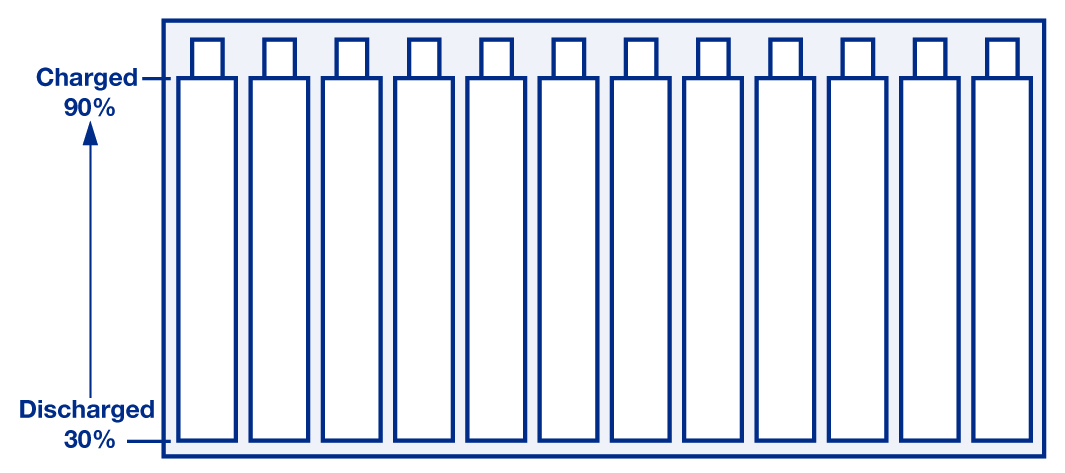
그림 3: 능동 밸런싱을 사용한 완전 방전
충전 시 능동 셀 밸런싱
밸런싱을 사용하지 않고 배터리 스택을 충전하면 약한 셀들이 강한 셀들보다 먼저 최대 용량에 도달한다. 이 경우에도 역시 약한 셀들 때문에 시스템으로 저장할 수 있는 총 전하가 제한되게 된다. 그림 4는 충전 시의 이러한 제한을 보여준다.
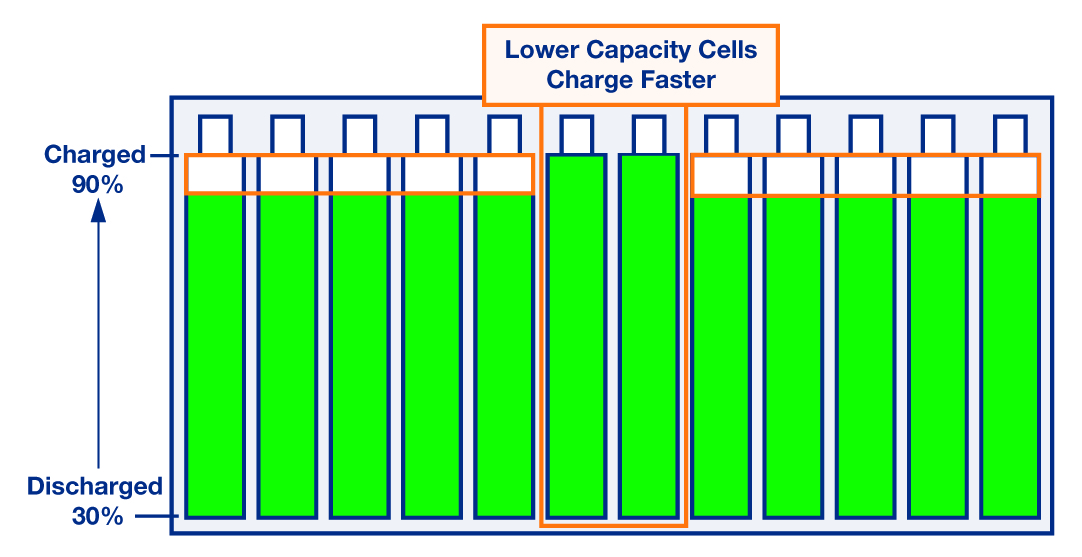
그림 4: 밸런싱을 사용하지 않은 충전
능동 밸런싱을 사용해서 충전 시에 전하 재분배를 함으로써 스택을 최대로 충전할 수 있다. 이 기사에서는 밸런싱에 할당되는 시간이나 밸런싱 전류가 밸런싱 시간에 미치는 영향에 대해서는 다루고 있지 않지만, 이러한 문제들도 중요하게 고려해야 한다.
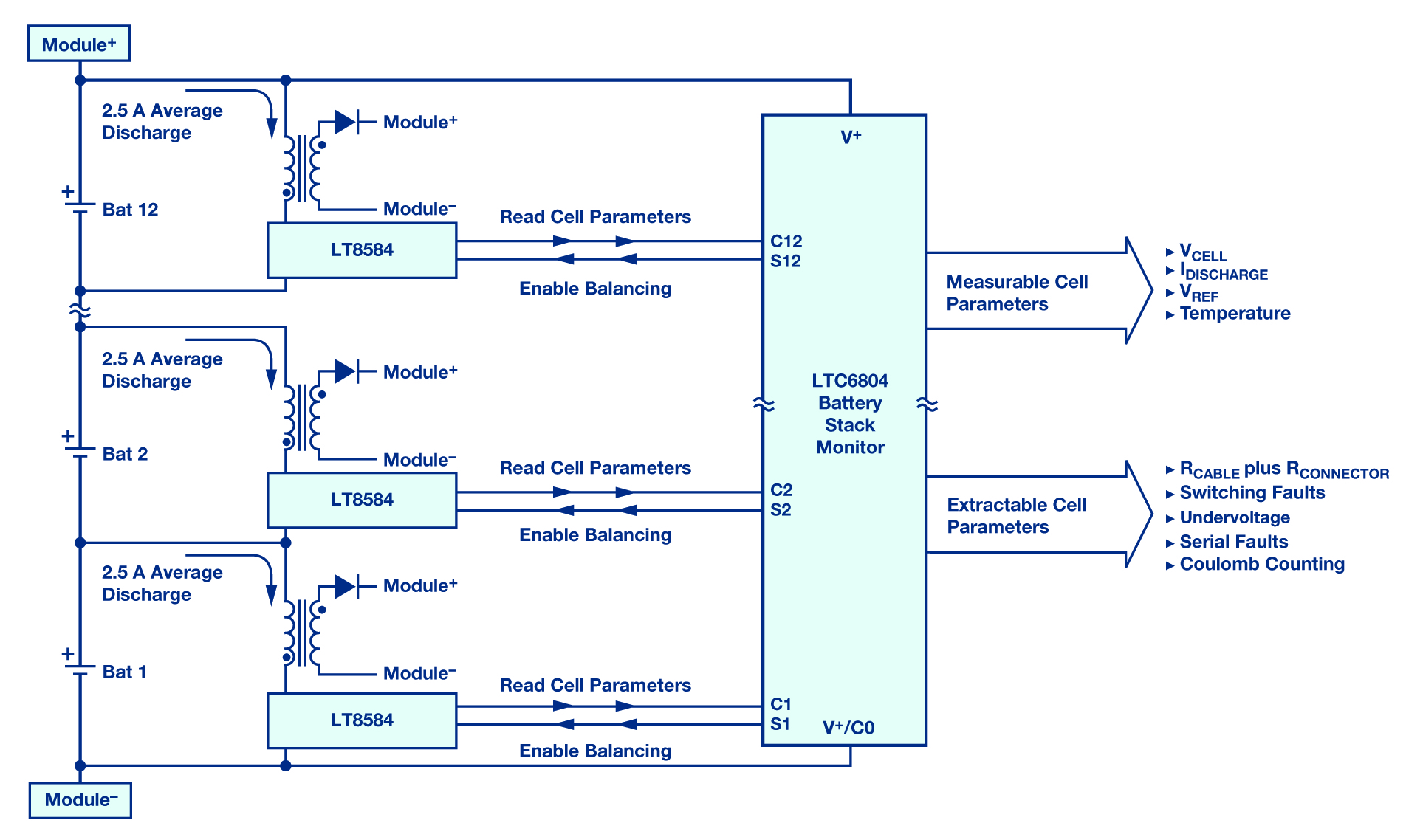
그림 5: 12셀 배터리 스택 모듈에 능동 밸런싱 적용
ADI 능동 셀 밸런서 제품
ADI는 다양한 시스템 요구를 충족하도록 다양한 능동 셀 밸런서 제품을 제공한다. LT8584는 2.5A 방전 전류의 모노리딕 플라이백 컨버터로서 LTC680x 다중소재 배터리 셀 모니터링 제품과 함께 사용하기에 적합하다.
어느 한 셀에서 배터리 스택의 맨 위 셀이나 스택 내의 다른 배터리 셀 또는 셀 조합으로 전하를 재분배할 수 있다. 배터리 셀마다 하나의 LT8584를 사용한다.
LTC3300은 리튬 및 LiFePO4 배터리용의 독립형 양방향 플라이백 컨트롤러로서, 최대 10A의 밸런싱 전류를 제공한다.
이 제품은 양방향을 지원하므로, 어느 한 셀로부터의 전하를 높은 효율로 12개 혹은 그 이상의 인접한 셀들로 전달할 수 있다. 단일 LTC3300이 최대 6개 셀을 밸런싱 할 수 있다.
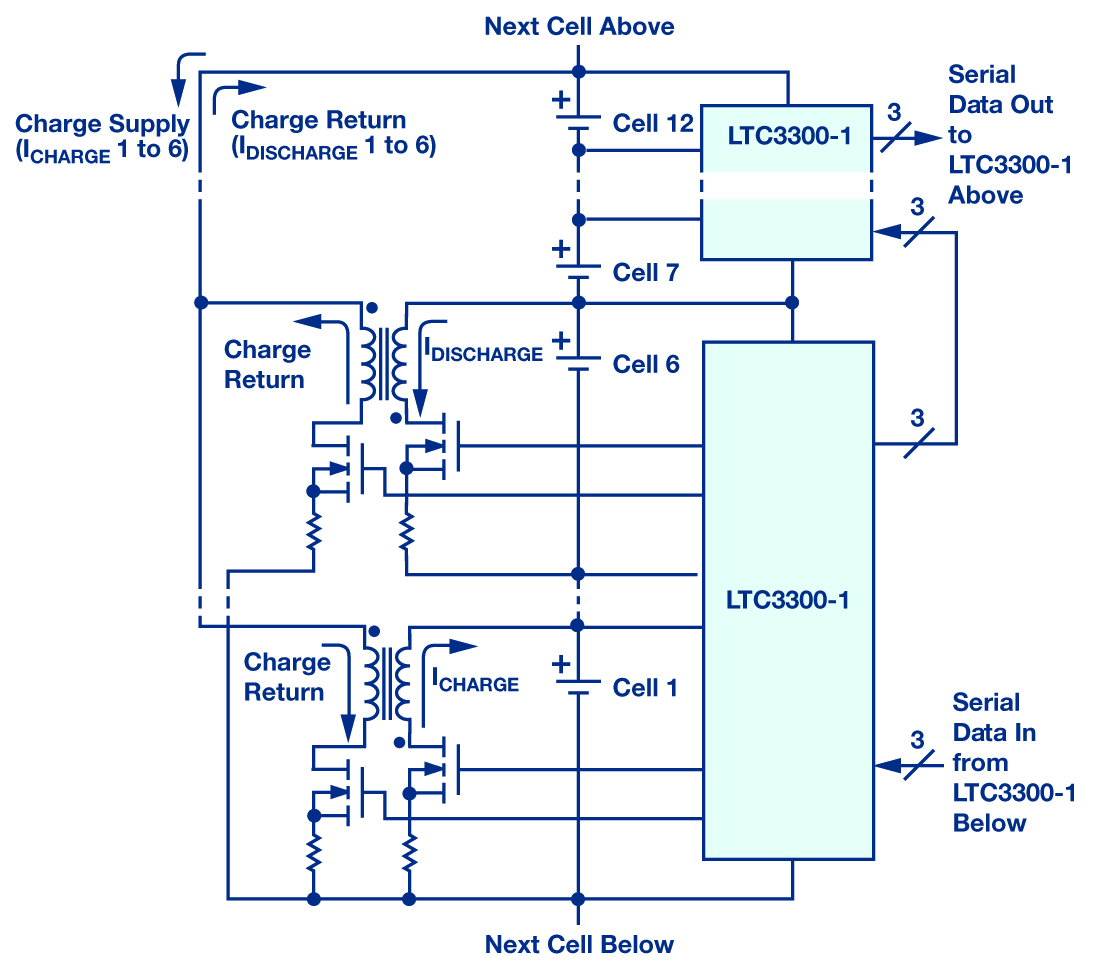
그림 6: 고효율 양방향 밸런싱
LTC3305는 독립형 납축전지 밸런서로서 최대 4개 셀을 밸런싱 할 수 있다. 다섯 번째의 저장용 배터리 셀(Aux)을 사용하고 이것을 다른 배터리들 각각과 병렬이 되게 해서 한 번에 하나씩 모든 배터리 셀을 밸런싱 한다. 납축전지는 견고하기 때문에 이렇게 처리하는 것이 가능하다.
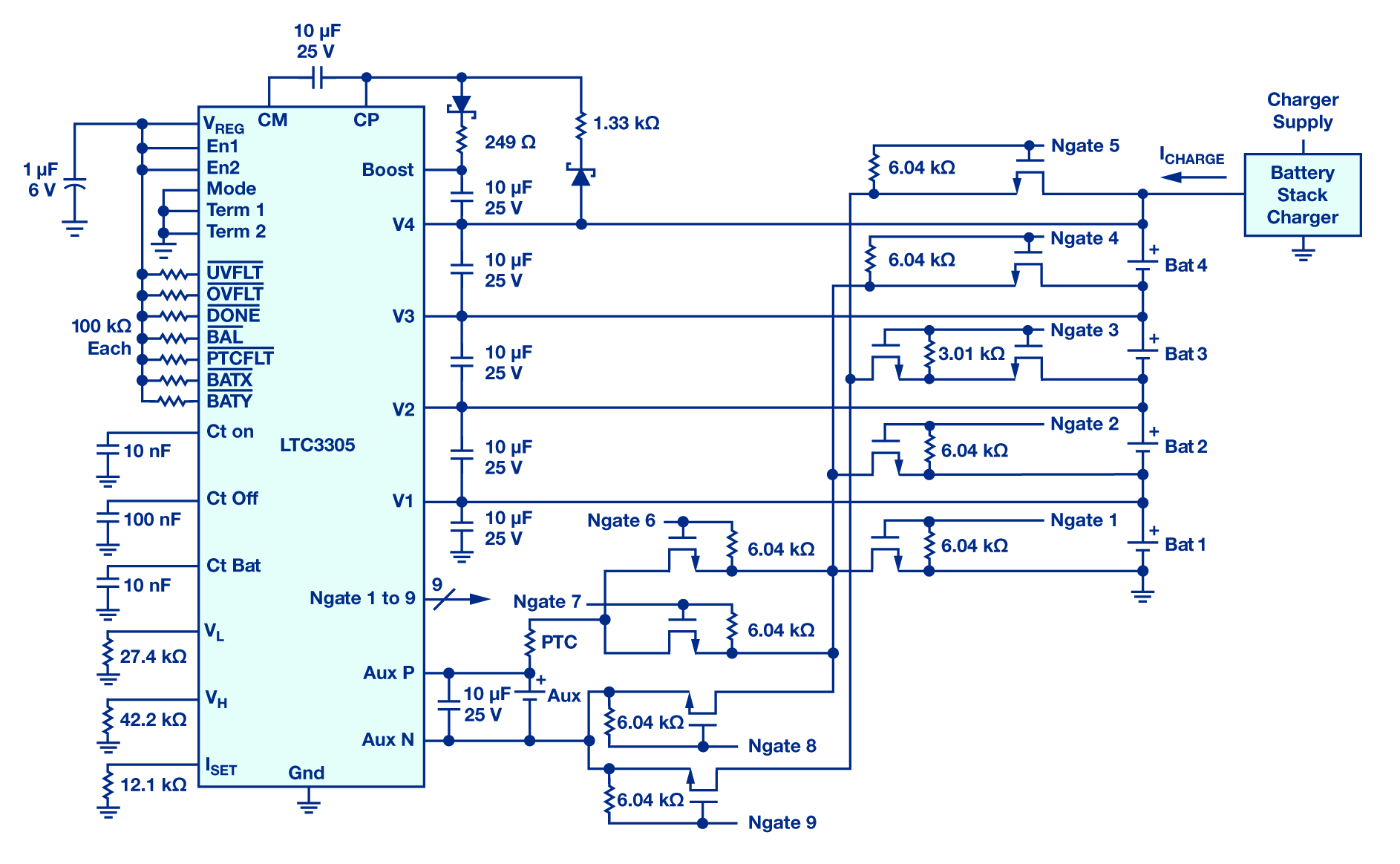
그림 7: 프로그램 된 상한 및 하한 배터리 전압을 사용한 4개 배터리 밸런싱
애플리케이션에 따라 적절한 방법 선택해야
능동 밸런싱과 수동 밸런싱은 각 셀의 SoC를 모니터링하고 일치시킴으로써 시스템 건전성을 향상시킬 수 있는 효과적인 방법이다.
능동 셀 밸런싱은 충전과 방전 시에 전하를 재분배하는 방식이고, 이와 달리 수동 셀 밸런싱은 충전 사이클 시에 전하를 소산시킨다. 그러므로 능동 셀 밸런싱은 시스템 사용시간을 늘리고 충전 효율을 높인다. 하지만 그러기 위해서 능동 밸런싱은 좀 더 복잡하고 풋프린트가 큰 솔루션을 필요로 한다. 수동 밸런싱은 좀 더 경제적이다. 어떤 기법이 더 적합하냐는 애플리케이션에 따라서 달라질 것이다.
ADI는 두 기법 모두 적용 가능한 솔루션들을 제공한다. 배터리 관리 IC(LTC6803과 LTC6804)에 통합된 형태나 이러한 IC들과 짝을 이루어서 사용할 수 있는 디바이스 형태로 솔루션을 제공하며 이로 인해 정밀하고 견고한 배터리 관리 시스템을 달성할 수 있다.
(왼쪽부터) 케빈 스콧, 샘 녹 책임자
이 기사는 아나로그디바이스의 케빈 스콧(Kevin Scott) 전원 제품 그룹 제품 마케팅 책임자와 샘 녹(Sam Nork) 보스턴 설계 센터 책임자의 ‘능동 배터리 셀 밸런싱(Active Battery Cell Balancing)’라는 제목의 글을 정리한 것입니다.







